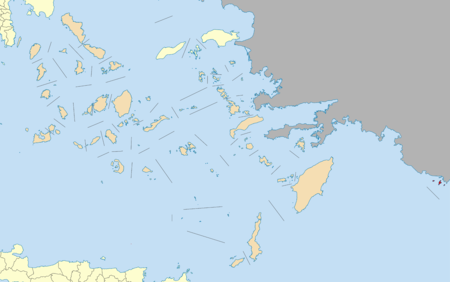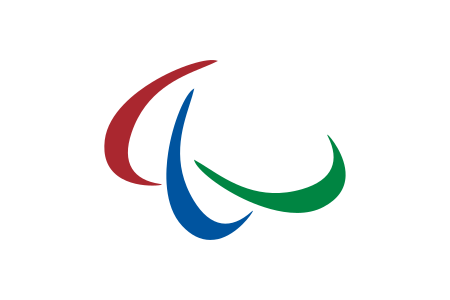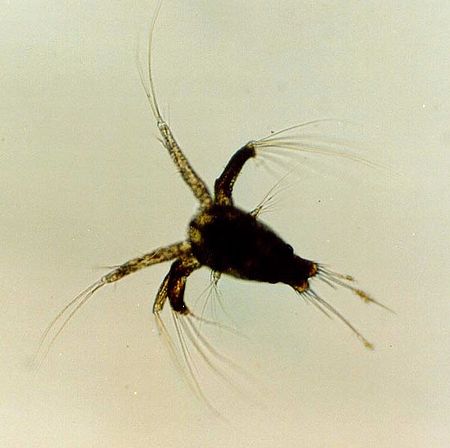Plosive
| |||||||||||||||||||||||||||||||||||||||||||||||||||||||||||||||||||||||||
Read other articles:

Islam in Europeby percentage of country population[1] 90–100% AzerbaijanKosovoTurkey 70–90% AlbaniaKazakhstan 50–70% Bosnia and Herzegovina 30–40% North Macedonia 10–20% BulgariaCyprusFranceGeorgiaMontenegroRussia 5–10% AustriaSwedenBelgiumGermanyGreece LiechtensteinNetherlandsSwitzerlandUnited KingdomNorwayDenmark 4–5% ItalySerbia 2–4% LuxembourgMaltaSloveniaSpain …

Halaman ini berisi artikel tentang penjelasan mengenai kebijakan Uni Eropa terhadap energi terbarukan dan perubahan iklim. Untuk dasar strategi, lihat Strategi Energi 2030 (Uni Eropa). REpowerEU (dibaca sebagai: repower EU; /riːˈpaʊər ˌiː ˈjuː/; Indonesia: mengenergikan ulang Uni Eropacode: id is deprecated )[cat. 1][cat. 2] merupakan sebuah rancangan kebijakan yang diajukan oleh Komisi Eropa untuk mengakhiri ketergantungan wilayah Eropa terhadap pasokan bahan bakar fosil…

Ereveld AncolEreveld AncolDetailsLokasiAncol, Pademangan, Jakarta Utara, Jakarta, IndonesiaNegaraIndonesiaJenisPemakaman perangPemilikYayasan Makam Perang BelandaJml. kuburanLebih dari 2.000 Ereveld Ancol (disebut juga Ereveld Antjol) adalah sebuah permakaman Belanda untuk warga militer dan sipil Belanda dan beberapa orang Indonesia yang tewas dalam Perang Dunia II, terutama pada saat serangan Hindia Belanda oleh Jepang dan selama pendudukan Jepang di Indonesia, baik dalam pertempuran maupun kar…

Elections to the legislative assembly of Tamil Nadu 1991 Tamil Nadu Legislative Assembly election ← 1989 15 June 1991 1996 → All 234 seats in the Tamil Nadu Legislative Assembly118 seats needed for a majorityTurnout63.84% (5.85%) First party Second party Leader J. Jayalalithaa M. Karunanidhi Party AIADMK DMK Alliance Congress alliance National Front Leader's seat Bargur(retained) Kangayam (vacated) Harbour(vacated) Seats won 225 7 Seat change 17…

Overview of notable advertising campaigns by Reebok This article has multiple issues. Please help improve it or discuss these issues on the talk page. (Learn how and when to remove these template messages) This article needs additional citations for verification. Please help improve this article by adding citations to reliable sources. Unsourced material may be challenged and removed.Find sources: Reebok advertising campaigns – news · newspapers · books · schol…

لمعانٍ أخرى، طالع البيان (توضيح). إذاعة البيان منطقة البث سوريا، العراق، ليبيا، أفغانستان، اليمن، باكستان ومناطق أخرى الشعار المكتوب إذاعة البيان التردد 92.5 ميغاهرتز، و99.3 ميغاهرتز تاريخ أول بث 2014 صنف الإذاعة إخبارية، إسلامية، حربية، حكومية، سياسية اللغة العرب�…

New Testament manuscript Papyrus 𝔓53New Testament manuscriptTextMatthew 26 †; Acts 9-10 †Date3rd centuryScriptGreekFoundEgyptNow atUniversity of MichiganCiteH. A. Sanders, A Third Century Papyrus of Matthew and Acts XVIII (London: 1937), pp. 151-161.TypeAlexandrian text-typeCategoryI Papyrus 53 (in the Gregory-Aland numbering), signed by 𝔓53, is an early copy of the New Testament in Greek. It is a papyrus manuscript containing parts of the Gospel of Matthew and the Acts of the Apo…

Scottish political group active 1909-1920s Highland Land League Founded1909Dissolved1920sPreceded byHighland Land League Crofters PartyMerged intoLabour and Scots National LeagueIdeologyLand ReformNationalisationScottish Home RuleCrofter interestsPolitical positionLeft-wingPolitics of ScotlandPolitical partiesElections Highlighted in pink are constituencies in which the League stood in the 1918 election. The Highland Land League founded in 1909 was a left wing political party acti…

Western Romance language Catala redirects here. For the ship, see SS Catala. For the surname, see Catalá. CatalanValenciancatalà, valenciàPronunciation[kətəˈla], [valensiˈa]Native toAndorra, Spain, France, ItalyRegionSouthern EuropeEthnicityCatalansAragonese from La FranjaBalearsValenciansSpeakersL1: 4.1 million (2012)[1]L2: 5.1 millionTotal: 9.2 millionLanguage familyIndo-European ItalicLatino-FaliscanLatinRomanceItalo-WesternWestern RomanceGallo-Iberian…

Island in Dodecanese, Greece For David Gilmour's song, see Castellorizon. Municipality in GreeceKastellorizoCastellorizo ΚαστελλόριζοΜεγíστηMunicipalityClockwise from the top: Port of Kastellorizo, Lady of Ro Tomb in Ro Islet, Castello Rosso along with Kastellorizo Archaeological Museum, Lady of Ro Statue, view of the town of Kastellorizo, Lycian Tomb, Fokiale Cave FlagSealKastellorizoCastellorizoLocation within the region Coordinates: 36°08′42″N 29°35′06″E /…

لوحة اسم محمود خان بن عبد الحميد مظفر دائما، الخليفة العثماني الأسماء العربية عادة ما تتكون من نظام تسمية طويل.[1][2][3] فهي لا تتكون من اسم أول واسم أوسط ولقب فحسب، بل من سلسلة طويلة من الأسماء، وهو النظام المستخدم في العالم العربي كله. ونظرا لأهمية اللغة العربية في…

1981 referendum 1981 Philippine constitutional plebiscite April 7, 1981 Changing the form of government For 79.53% Against 20.47% Certain prohibitions on elective officials For 78.95% Against 21.05% Allowing natural-born citizens who lost citizenship to own land For 77.55% Against 22.45% Politics of the Philippines Government Constitution of the Philippines Charter Change Laws Legal codes Taxation Executive President of the Philippines Bongbong Mar…

1906 U.S. law regulating the meat industry Federal Meat Inspection ActLong titleAn Act Making appropriations for the Department of Agriculture for the fiscal year ending June thirtieth, nineteen hundred and seven.Acronyms (colloquial)FMIANicknamesAgricultural Department Appropriations (1906)Enacted bythe 59th United States CongressEffectiveJune 30, 1906CitationsPublic lawPub. L.Tooltip Public Law (United States) 59–382Statutes at Large34 Stat. 669CodificationTitles amended2…

State park in Suffolk County, New York Napeague State ParkNapeague State Park, May 2023Location of Napeague State Park within New York StateTypeState park (undeveloped)LocationTown of East HamptonSuffolk County, New YorkCoordinates40°59′23″N 72°04′37″W / 40.9897°N 72.0769°W / 40.9897; -72.0769Area1,364 acres (5.52 km2)[1]Operated byNew York State Office of Parks, Recreation and Historic PreservationVisitors65,985 (in 2014)[2]…

ألعاب بارالمبية صيفية 1960 تل أبيب، إسرائيل الألعاب البارالمبية الصيفية 1968 الدول المشاركة 28 الرياضيون المشاركون 750 المسابقات 181، في 10 رياضة انطلاق الألعاب 18 سبتمبر المفتتح الرسمي إيغال آلون الملعب ملعب الجامعة العبرية الاختتام 25 سبتمبر الموقع الرسمي الموقع الرسمي تعديل م…

Campionato mondiale di Formula 1 1998Edizione n. 49 del Campionato mondiale di Formula 1 Dati generaliInizio8 marzo Termine1º novembre Prove16 Titoli in palioPiloti Mika Häkkinensu McLaren MP4/13 Costruttori McLaren Altre edizioniPrecedente - Successiva Edizione in corso Il campionato mondiale di Formula 1 1998 organizzato dalla FIA è stata, nella storia della categoria, la 49ª ad assegnare il Campionato Piloti, vinto per la prima volta dal finlandese Mika Häkkinen, e la 41ª ad assegna…

هذه المقالة تحتاج للمزيد من الوصلات للمقالات الأخرى للمساعدة في ترابط مقالات الموسوعة. فضلًا ساعد في تحسين هذه المقالة بإضافة وصلات إلى المقالات المتعلقة بها الموجودة في النص الحالي. (يناير 2018) الدوري البحريني الممتاز 1982–83معلومات عامةالرياضة كرة القدم البطولة الدوري البح�…

British actor (1913–1984) Francis de WolffFrancis de Wolff in The Smallest Show on Earth, 1957BornFrancis Marie de Wolff(1913-01-07)7 January 1913Essex, EnglandDied18 April 1984(1984-04-18) (aged 71)Sussex, EnglandOccupationActorYears active1935–1977 (Retired)Spouses Jean Fairlie (m. 1942; div. 1950) Melissa Dundas (m. 1958; div. 1971) Linda Finch (m. 1976)…

Biological process In the first stage of sexual reproduction, meiosis, the number of chromosomes is reduced from a diploid number (2n) to a haploid number (n). During fertilisation, haploid gametes come together to form a diploid zygote, and the original number of chromosomes is restored. Sexual reproduction is a type of reproduction that involves a complex life cycle in which a gamete (haploid reproductive cells, such as a sperm or egg cell) with a single set of chromosomes combines with anothe…

Disambiguazione – Se stai cercando l'omonima arcidiocesi brasiliana, vedi Arcidiocesi di Mariana. MarianaSede vescovile titolareDioecesis Marianensis in Insula CorsicaChiesa latinaCattedrale di MarianaVescovo titolarePaolo De Nicolò Istituita2002 StatoFrancia Diocesi soppressa di MarianaSuffraganea diGenova ErettaIV secolo ? CattedraleSanta Maria Assunta Soppressa29 novembre 1801 territorio unito alla diocesi di Ajaccio Dati dall'annuario pontificio Sedi titolari cattoliche Manuale La ca…
